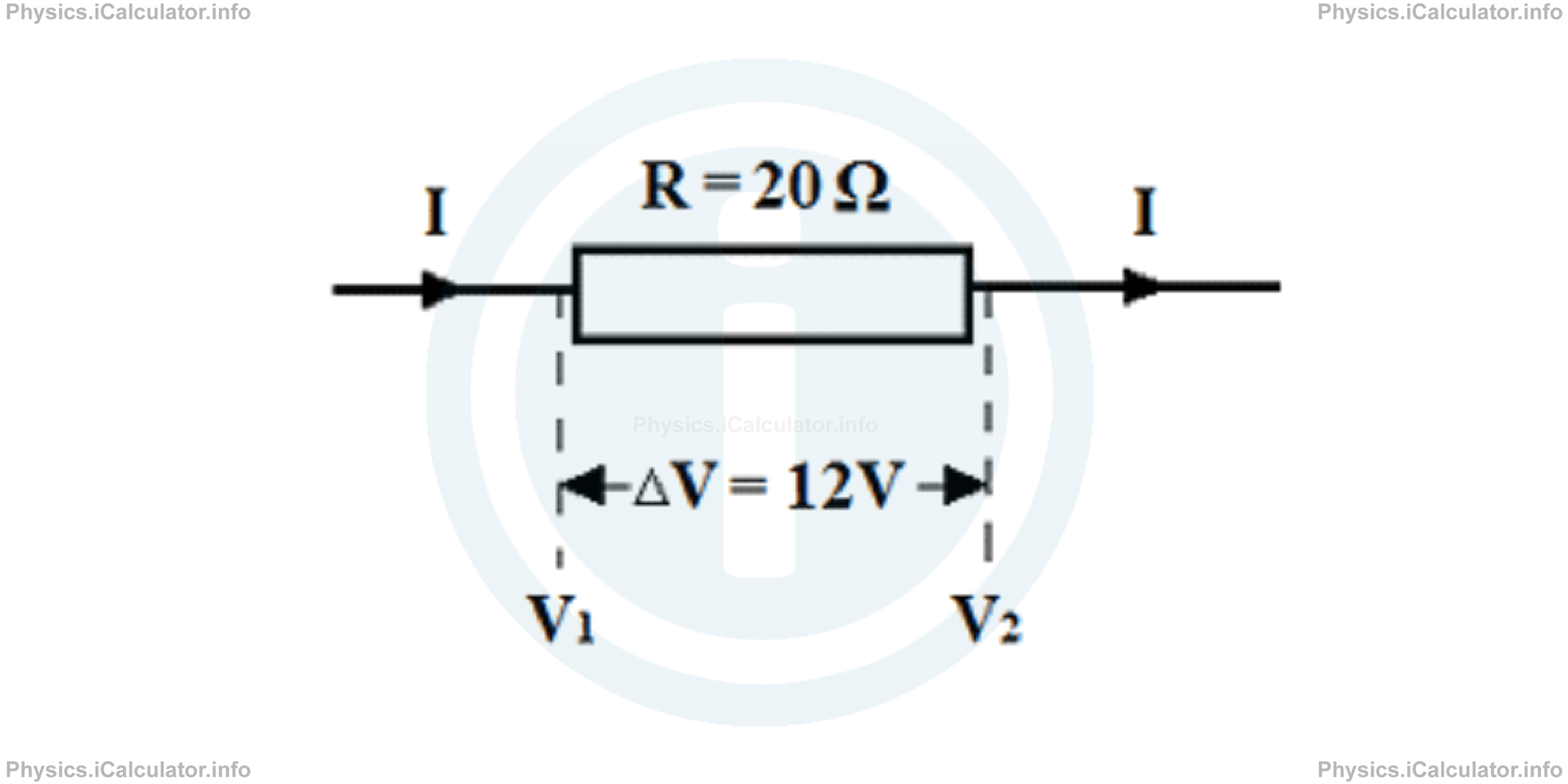Menu
Physics Lesson 15.3.3 - Ohm's Law for a Part of the Circuit
Please provide a rating, it takes seconds and helps us to keep this resource free for all to use
Welcome to our Physics lesson on Ohm's Law for a Part of the Circuit, this is the third lesson of our suite of physics lessons covering the topic of Electric Potential Difference (Voltage). Ohm's Law, you can find links to the other lessons within this tutorial and access additional physics learning resources below this lesson.
Ohm's Law for a Part of the Circuit
There is a direct relationship between the potential difference across a circuit component and the current flowing through it. This means higher the potential difference across a component, larger the current flowing through it. We write
Since all circuit components have their own resistance which opposes the current flow, we must include it in the calculations. Resistance acts as a proportionality constant obtain
The above formula when rearranged to isolate R, gives the mathematical expression of Ohm's Law:
The definition of Ohm's Law is as follows:
The current passing through a circuit component is directly proportional to the potential difference applied across it.
Example 3
The potential difference across a 20 Ω resistor is 12 V. What is the current flowing through the resistor?

Solution 3
Applying Ohm's Law
we obtain for the current flowing through the resistor:
= 0.6 A
You have reached the end of Physics lesson 15.3.3 Ohm's Law for a Part of the Circuit. There are 4 lessons in this physics tutorial covering Electric Potential Difference (Voltage). Ohm's Law, you can access all the lessons from this tutorial below.
More Electric Potential Difference (Voltage). Ohm's Law Lessons and Learning Resources
Whats next?
Enjoy the "Ohm's Law for a Part of the Circuit" physics lesson? People who liked the "Electric Potential Difference (Voltage). Ohm's Law lesson found the following resources useful:
- Part Circuit Feedback. Helps other - Leave a rating for this part circuit (see below)
- Electrodynamics Physics tutorial: Electric Potential Difference (Voltage). Ohm's Law. Read the Electric Potential Difference (Voltage). Ohm's Law physics tutorial and build your physics knowledge of Electrodynamics
- Electrodynamics Revision Notes: Electric Potential Difference (Voltage). Ohm's Law. Print the notes so you can revise the key points covered in the physics tutorial for Electric Potential Difference (Voltage). Ohm's Law
- Electrodynamics Practice Questions: Electric Potential Difference (Voltage). Ohm's Law. Test and improve your knowledge of Electric Potential Difference (Voltage). Ohm's Law with example questins and answers
- Check your calculations for Electrodynamics questions with our excellent Electrodynamics calculators which contain full equations and calculations clearly displayed line by line. See the Electrodynamics Calculators by iCalculator™ below.
- Continuing learning electrodynamics - read our next physics tutorial: Electric Circuits. Series and Parallel Circuits. Short Circuits
Help others Learning Physics just like you
Please provide a rating, it takes seconds and helps us to keep this resource free for all to use
We hope you found this Physics lesson "Electric Potential Difference (Voltage). Ohm's Law" useful. If you did it would be great if you could spare the time to rate this physics lesson (simply click on the number of stars that match your assessment of this physics learning aide) and/or share on social media, this helps us identify popular tutorials and calculators and expand our free learning resources to support our users around the world have free access to expand their knowledge of physics and other disciplines.
Electrodynamics Calculators by iCalculator™
- Amount Of Substance Obtained Through Electrolysis Calculator
- Charge Density Calculator
- Electric Charge Stored In A Rc Circuit Calculator
- Electric Field In Terms Of Gauss Law Calculator
- Electric Power And Efficiency Calculator
- Electron Drift Velocity Calculator
- Equivalent Resistance Calculator
- Force Produced By An Electric Source Calculator
- Joules Law Calculator
- Ohms Law Calculator
- Potential Difference In Rc Circuit Calculator
- Resistance Due To Temperature Calculator
- Resistance Of A Conducting Wire Calculator